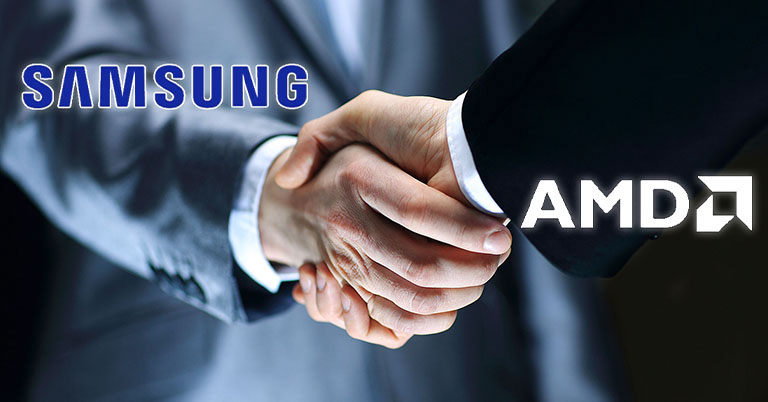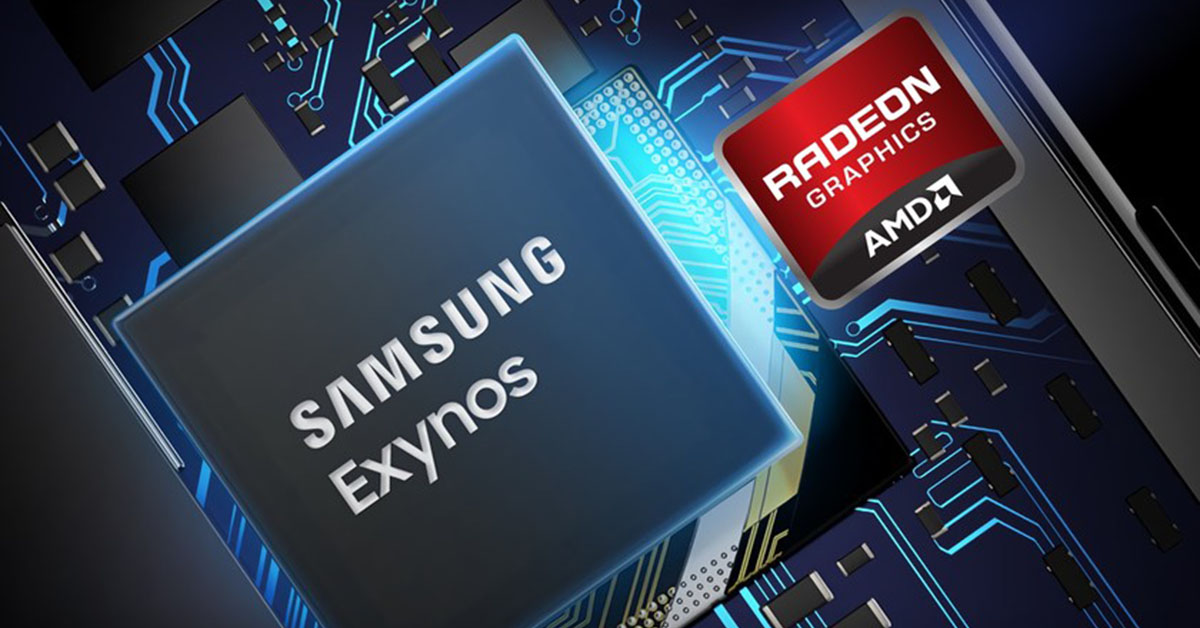
Samsung announced its partnership with AMD nearly four years ago, with the intention of using AMD’s RDNA architecture-based GPU in its mobile processors. The South Korean tech giant has decided to extend their partnership for another several years. In this article, we’ll learn more about the Samsung-AMD collaboration.
Samsung-AMD Partnership History
Samsung previously used ARM-Mali GPUs in their Exynos processors, but their performance was inadequate to defeat market leader Qualcomm. As a result, in June 2019, Samsung announced an alliance with AMD to use RDNA GPUs in Exynos. Last year, Samsung and AMD worked together on designing RDNA 2 architecture, and Samsung introduced its own Xclipse 920 GPU based on that architecture.
 With the promise of console-like gameplay on mobile devices, Xclipse was the industry’s first mobile GPU with hardware-accelerated ray tracing and variable rate shading features. That GPU was then used in Exynos 2200 which we witnessed in the Galaxy S22 series (Europe variant). However, the Exynos 2200 couldn’t compete with Snapdragon 8 Gen 1 as expected. In case you don’t know, AMD technology is also used in gaming consoles like PS4 and Xbox One. But most surprisingly, AMD graphics can also be found in some Intel CPUs!
With the promise of console-like gameplay on mobile devices, Xclipse was the industry’s first mobile GPU with hardware-accelerated ray tracing and variable rate shading features. That GPU was then used in Exynos 2200 which we witnessed in the Galaxy S22 series (Europe variant). However, the Exynos 2200 couldn’t compete with Snapdragon 8 Gen 1 as expected. In case you don’t know, AMD technology is also used in gaming consoles like PS4 and Xbox One. But most surprisingly, AMD graphics can also be found in some Intel CPUs!
- Also read:
- Check out Samsung’s upcoming Galaxy Tab S9+ in these leaked renders
- AMD adds three 65W desktop CPUs in the Zen-4 based Ryzen 7000 series
- Samsung Galaxy A14 4G launched in Nepal with 50MP triple cameras
Partnership Extension
According to a recent press release from Samsung, Exynos will continue to use AMD GPUs. Seogjun Lee, Executive Vice President of Application Processor (AP) Development at Samsung Electronics said that “Together with AMD, Samsung has been revolutionizing mobile graphics, including our recent collaboration that brought ray tracing capability to mobile processors for the first time in the industry.”

AMD GPUs will likely be included in the budget and midrange chipsets as well. Xclipse GPU may soon be seen in Galaxy A, Galaxy F, and Galaxy M series smartphones, as well as more affordable Galaxy Tab series devices. With this collaboration, Samsung will get a stronger GPU, while AMD will gain more audience exposure.
- Meanwhile, check our full review of the Samsung Galaxy S23 Ultra.







![Best Gaming Laptops in Nepal Under Rs. 250,000 (रु 2.5 Lakhs) [2025] Best Gaming Laptops Under 2.5 lakhs in Nepal [Feb 2025 Update]](https://cdn.gadgetbytenepal.com/wp-content/uploads/2025/02/Best-Gaming-Laptops-Under-2.5-lakhs-in-Nepal-Feb-2025-Update.jpg)
![Best Gaming Laptops in Nepal Under Rs. 120,000 (रु 1.2 Lakhs) [2025] Best Budget Gaming Laptops Under Rs 120000 in Nepal 2025 Update](https://cdn.gadgetbytenepal.com/wp-content/uploads/2025/05/Best-Budget-Gaming-Laptops-Under-Rs-120000-in-Nepal-2024-Update.jpg)
![Best Laptops Under Rs. 80,000 in Nepal [2025] Best Laptops Under 80,000 in Nepal March 2025 Update](https://cdn.gadgetbytenepal.com/wp-content/uploads/2025/03/Best-Laptops-Under-80000-in-Nepal-March-2025-Update.jpg)
![Best Gaming Laptops in Nepal Under Rs. 200,000 (रु 2 Lakhs) [2025] Best gaming lapotp under 2 lakhs Nepal Feb 2025](https://cdn.gadgetbytenepal.com/wp-content/uploads/2025/01/Best-Gaming-Laptops-Under-2-Lakh-Nepal-Feb-2025-Update.jpg)

![Best Mobile Phones Under Rs. 15,000 in Nepal [Updated 2025] Best Phones Under 15000 in Nepal 2024 Budget Smartphones Cheap Affordable](https://cdn.gadgetbytenepal.com/wp-content/uploads/2024/03/Best-Phones-Under-15000-in-Nepal-2024.jpg)
![Best Mobile Phones Under Rs. 20,000 in Nepal [Updated] Best Mobile Phones Under NPR 20000 in Nepal 2023 Updated Samsung Xiaomi Redmi POCO Realme Narzo Benco](https://cdn.gadgetbytenepal.com/wp-content/uploads/2024/01/Best-Phones-Under-20000-in-Nepal-2024.jpg)
![Best Mobile Phones Under Rs. 30,000 in Nepal [Updated 2025] Best Phones Under 30000 in Nepal](https://cdn.gadgetbytenepal.com/wp-content/uploads/2025/01/Best-Phones-Under-30000-in-Nepal.jpg)
![Best Mobile Phones Under Rs. 40,000 in Nepal [Updated 2025] Best Phones Under 40000 in Nepal 2024 Smartphones Mobile Midrange](https://cdn.gadgetbytenepal.com/wp-content/uploads/2024/02/Best-Phones-Under-40000-in-Nepal-2024.jpg)
![Best Mobile Phones Under Rs. 50,000 in Nepal [Updated 2025] Best Phones Under 50000 in Nepal](https://cdn.gadgetbytenepal.com/wp-content/uploads/2025/01/Best-Phones-Under-50000-in-Nepal.jpg)
![Best Flagship Smartphones To Buy In Nepal [Updated] Best flagship phone 2025](https://cdn.gadgetbytenepal.com/wp-content/uploads/2024/07/Best-Flagship-Phones-who-is-it-ft-1.jpg)